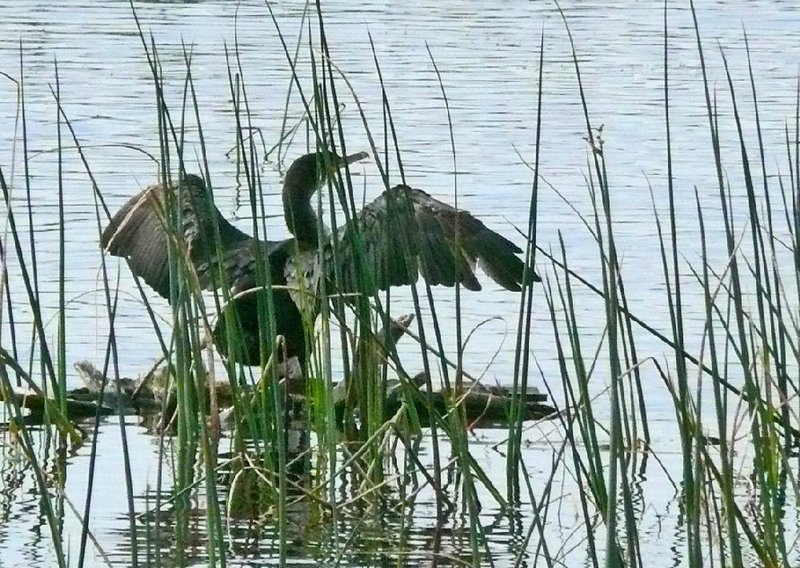Owners of Arkansas fish farms are still awaiting special permits that will allow them to kill a limited number of double-crested cormorants when they arrive here by the thousands late this fall and early winter.
In a letter Friday, Gov. Asa Hutchinson asked Dan Ashe, director of the U.S. Fish and Wildlife Service, to "take action to protect fish farmers in Arkansas and across the country from devastating losses that can occur as a result of these birds' fall migration."
U.S. District Judge John D. Bates ruled in Washington, D.C., this spring that the agency had violated the National Environmental Protection Act in the way it renewed two kinds of "depredation" orders allowing state wildlife management officials and operators of fish farms to kill double-crested cormorants or other birds that threaten public resources or the aquaculture industry.
The judge found that the agency did a cut-and-paste job by using data from a 2009 environmental assessment that said killing a limited number of cormorants would not harm its nationwide population for the 2014 environmental assessment. The lawsuit was filed by Public Employees for Environmental Responsibility, a watchdog group of current and former government employees.
The judge said individual Form 37 permits, in the meantime, could be considered on a case-by-case basis because they were not part of the Public Employees for Environmental Responsibility lawsuit.
Hutchinson asked the service to begin allowing those permits as quickly as possible.
Mike Freeze, a co-owner of Keo Fish Farm in Lonoke County, applied for one of the permits in late August. He said Monday that the agency expects to start issuing them by late October.
"We're all hoping for permits that allow us to kill say 100 or 200," Freeze said. Killing a few of the birds strengthens the effect of scare tactics, such as propane cannons, that fish farmers set up on the levees of their multipond farms, he and others in aquaculture say.
A cormorant will eat a pound of fish per day. Having a thousand of them eating a pound of fish a day from $5 a pound to $100 a pound, depending on the species, adds up quickly, Freeze has said.
Arkansas exports more than 6 billion bait fish nationwide annually -- some 80 percent of the U.S. market -- as part of the state's overall $170 million aquaculture industry. Arkansas also leads the nation in production of largemouth bass for stocker fish, hybrid striped bass fry and Chinese carp, according to the state Department of Agriculture.
Small flocks of cormorants arrived earlier than usual this year, Freeze said Monday. "Right now, we're able to scare all those off," he said. "It's easier to do that right now, because there are still a lot of shad in the Arkansas River and they're happy for now to feast there."
Business on 09/27/2016
